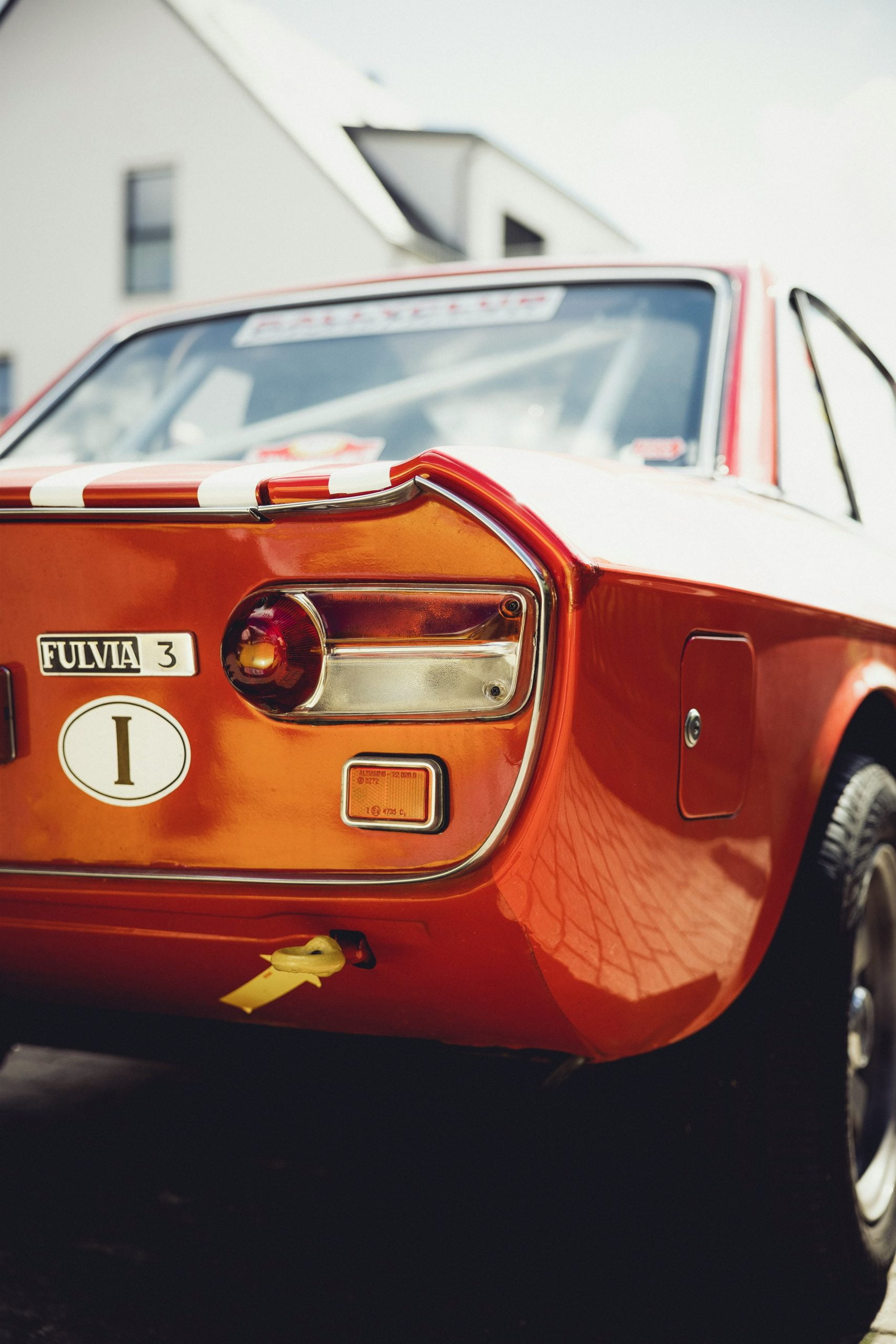1963 Lancia Fulvia
The Lancia Fulvia, produced from 1963 to 1976, is a classic example of Italian automotive craftsmanship and innovation. Renowned for its distinctive design, advanced engineering, and success in motorsport, the Fulvia remains a beloved icon among enthusiasts and collectors alike. The development of the Lancia Fulvia began in the early 1960s, aiming to replace the aging Lancia Appia. Designed by Antonio Fessia, the Fulvia was named after Via Fulvia, an ancient Roman road. It was launched in 1963 at the Geneva Motor Show, showcasing Lancia’s commitment to combining luxury with performance in a compact package. The Fulvia was notable for its innovative engineering, including a narrow-angle V4 engine mounted transversely at the front, which was a departure from traditional inline configurations. This layout allowed for a more compact engine bay, optimizing space and improving weight distribution for better handling.

The Lancia Fulvia exuded elegance and sophistication, typical of Italian automotive design of the era. Its clean lines, rounded contours, and understated elegance set it apart from its contemporaries. The front end featured distinctive oval headlights, a prominent grille, and a sloping bonnet, giving the car a purposeful and aerodynamic appearance. Inside, the Fulvia offered a well-appointed interior with comfortable seating, quality materials, and ergonomic controls. The dashboard was minimalist yet functional, housing clear instrumentation and intuitive switches, reflecting Lancia’s attention to detail and driver-centric design philosophy.



At the heart of the Lancia Fulvia was its advanced engineering and exceptional performance capabilities. The narrow-angle V4 engine, available in various displacements ranging from 1.1 to 1.6 liters, delivered spirited performance and a distinctive engine note. The engine’s compact size and lightweight construction contributed to the Fulvia’s agile handling and nimble responsiveness on both city streets and winding roads. The Fulvia’s chassis featured independent front suspension with double wishbones and coil springs, coupled with a sophisticated rear suspension setup that ensured superior stability and cornering prowess. Disc brakes on all four wheels provided reliable stopping power, enhancing the car’s safety and driving dynamics.
The Lancia Fulvia achieved notable success in motorsport, particularly in rallying, where it earned a reputation for its reliability and agility. In 1972, the Fulvia won the International Rally Championship, cementing its status as a formidable competitor against larger and more powerful rivals. Its victories showcased Lancia’s engineering prowess and commitment to performance under demanding conditions.



The Lancia Fulvia holds a special place in automotive history as a symbol of Italian elegance and engineering excellence. Its combination of advanced technology, distinctive design, and motorsport pedigree has earned it a dedicated following among enthusiasts and collectors worldwide. Well-maintained examples of the Fulvia, particularly the sportier HF (High Fidelity) variants, command significant value in the classic car market due to their rarity and historical significance. Beyond its collectibility, the Fulvia remains a testament to Lancia’s innovative spirit and commitment to producing cars that blend performance with luxury. Its timeless design and dynamic driving experience ensure that the Fulvia continues to captivate automotive enthusiasts and inspire admiration for Italian automotive craftsmanship.